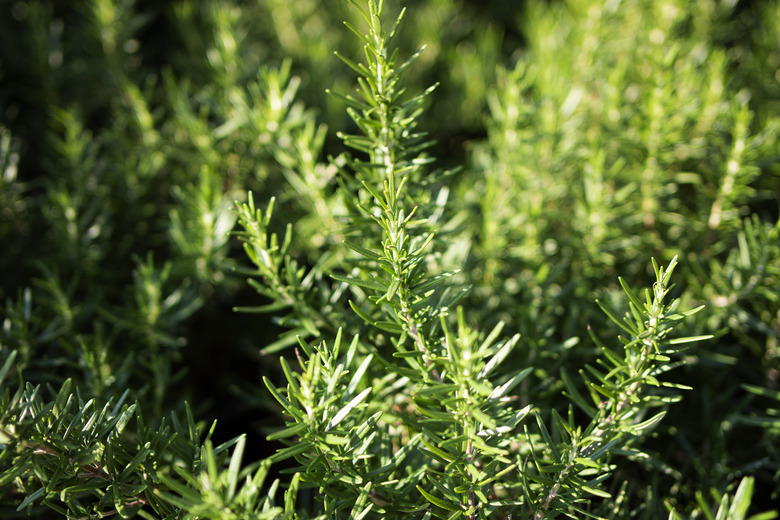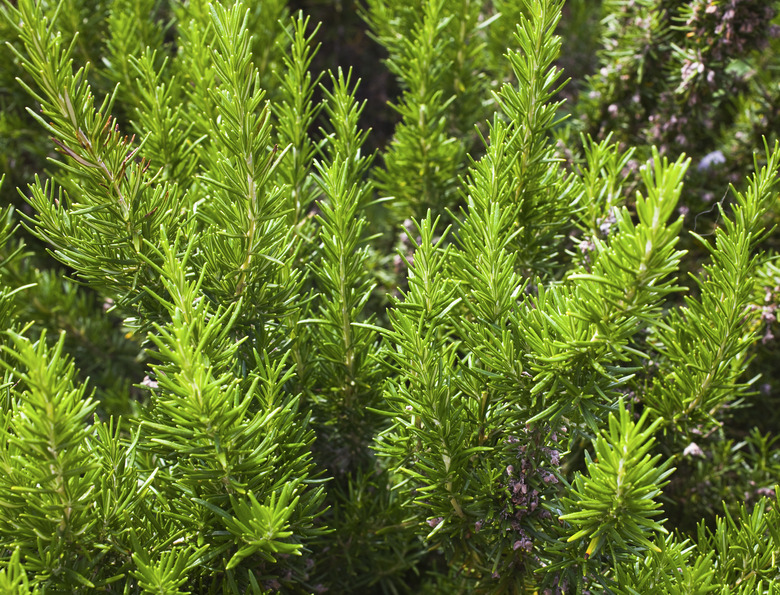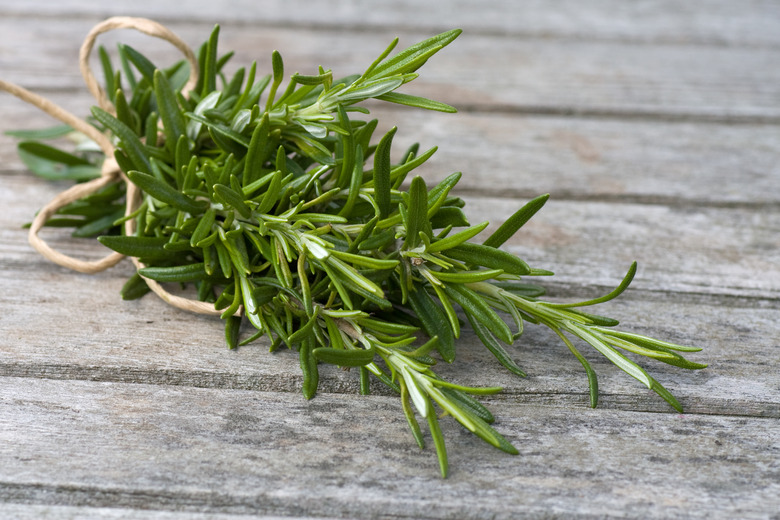How To Grow Rosemary
Known for its pleasant scent and distinct taste, rosemary (Salvia rosmarinus, USDA plant hardiness zones 7-10) is popular in the landscape as well as in herb gardens. An evergreen perennial, rosemary reaches 3 to 5 feet in height and spreads almost as wide at 4 feet in diameter. It produces white, pink, blue, or purple flowers in early summer when it is happy with its growing conditions.
Most gardeners grow rosemary for its fragrant leaves, which add a dash of earthiness to dishes like roast chicken, roast lamb, grilled fish, and hearty stews. Rosemary is also a calming scent, often seen as a mainstay of aromatherapy.
Best Uses for Rosemary
According to Burpee, dried rosemary costs around $4 for one-third of an ounce at the grocery store, which translates to a staggering $192 a pound. At that price, it is easy to see why having your own source of rosemary in the garden is a smart idea, especially if you're a cook who enjoys experimenting with rustic, robust flavors in your dishes. Rosemary adds a pleasant flavor to chicken, pork, and potatoes, but rosemary is not just for eating.
Rosemary can work double duty in the garden, making a nice hedge or offering a spot of fragrance and color throughout the landscape. This evergreen herb offers visual interest all year long even when some of your other plants falter or fade. You can even trim rosemary into topiary shapes if you are feeling particularly regal. Whether you sculpt it or let it grow its own way, rosemary is incredibly easy to grow, making it perfect for both new and seasoned gardeners.
Starting Rosemary From Seed
You can sow rosemary seeds outside as soon as the last frost in your area passes. To give your rosemary seeds a strong start, mix a 5-10-5 fertilizer into the soil where you intend to plant. Cover the seeds with about 1/2 inch of soil when planting and space them 2 to 3 feet apart.
Water your seeds gently immediately after planting them. Keep the soil moist but not soggy until the seedlings emerge in 14 to 21 days. Not all of your rosemary seeds will germinate, so it is OK to sow a few more than you think you will want and thin the plants later if necessary.
If you want to get a jump on the growing season, start your seeds indoors about 10 weeks before the last expected frost. If you go this route, remember to harden off your seedlings a little at a time before moving them outdoors for good.
Starting Rosemary From a Seedling
If you prefer, you can start rosemary from seedlings or a cutting. Starting from a cutting instead of from seed will give your rosemary a faster start since you won't have to wait two weeks for the seeds to germinate. Both are acceptable planting methods, however.
For purchased seedlings, space the plants 2 to 3 feet apart and plant them at the same depth as they are planted in their original containers. Make sure the plant's roots are completely covered with soil.
For optimal growing, rosemary likes a soil temperature of 70 degrees Fahrenheit or above. As long as the danger of frost has passed, however, it is safe to plant your seedlings outdoors. They may grow slowly at first, but they will pick up speed as it gets warmer. Water in your newly planted rosemary plants as soon as you plant them.
In What Zone Does Rosemary Grow Best?
In USDA zones 8 through 11, rosemary is an evergreen perennial shrub, although many plants also survive winters in zone 7. In colder zones, however, rosemary that is left outside will die during the winter months. If you wish to grow rosemary in cooler climates, plant it in a container that you can easily move indoors for the winter.
When Should You Plant Rosemary?
Rosemary is best planted in the spring so that it has time to establish itself before winter's cooler temperatures arrive. Ideally, rosemary prefers to be planted when the soil temperature reaches 70 degrees Fahrenheit. You don't strictly need to wait that long, however. Most rosemary plants are fine if they are planted after the last frost, but be aware that an unexpected frost or an unusually late frost can kill young plants.
Soil, Sunlight, and Water Recommendations for Rosemary
In a perfect world, rosemary would love to live in soil with a pH level between 6.0 and 7.0. Fortunately, however, it will accept soils that differ from perfection by a point or two. Rosemary will not, however, forgive soils that drain poorly. Heavy clay soil usually proves to be fatal if it is not amended with organic matter, such as compost or peat moss, to improve drainage.
The most common mistake that gardeners make with rosemary is overwatering, so be sure to avoid this trap. Rosemary is not a desert plant, but you should allow the soil to dry between waterings. While rosemary needs only a bit of water, it likes lots of sun and does best when it receives six to eight hours of direct sunlight per day.
Each spring, fertilize your plants with a 5-10-5 fertilizer and prune out any dead wood. You can also prune back your rosemary plant a bit every few weeks to keep it from growing overly tall and developing skinny branches.
How to Propagate Rosemary
You can easily propagate rosemary from cuttings. To do so, cut the top 4 to 6 inches off the top of a rosemary stem after it is finished flowering in late spring or early summer. Remove the leaves from the bottom third of the stem and press the stem into soil or a soilless mix to the bottom sets of leaves.
You can also dip the bare end of the rosemary cutting in a rooting compound to encourage root growth before pressing the cutting into loose soil. You can place several cuttings in a small container, but a seed tray works best because it allows you to give each cutting its own space so you don't have to untangle roots later. Water the cuttings gently to keep the soil moist until roots form.
Keep your cuttings growing indoors over the winter, transplanting them into bigger pots if necessary. In the spring, your young plants will be sturdy enough to plant outdoors.
How to Winterize Rosemary
Although it is an evergreen plant in warmer climates, rosemary that is left outdoors in zone 6 or colder won't survive the winter. In order to keep your rosemary plant for next year, you will need to bring it indoors.
Indoors, it is important to set your rosemary plant in a south-facing window where it will receive lots of sunlight. Rosemary plants grown indoors will tolerate temperatures as low as 40 degrees Fahrenheit, but they won't be happy if they are not getting enough light.
Unfortunately, rosemary grown outside does not respond well to moving from the ground to a container. If you intend to bring the plants inside for the winter, be sure to start them in containers in the spring; don't bother planting them in the ground.
How to Harvest Rosemary
Harvesting rosemary is easy, and you can do it at any time during the growing season. Simply cut off a few sprigs of the plant and pluck off individual leaves to add to dishes or use the entire stem for a garnish or for flavoring stews and sauces. When harvesting rosemary, you can take up to one-third of the plant. Allow the plant to replenish this growth before harvesting from it again.
When harvesting, the younger stems and leaves have the best flavor, but you won't be disappointed if you accidentally grab an older stem. In fact, it's the older, woody stems that are perfect for using as skewers (with the leaves intact) for meat. By pressing woody rosemary stems into meat, chicken, or vegetables before cooking them, you'll infuse the flavor of rosemary into the food.
Common Pests and Other Problems for Rosemary
Perhaps because of its strong scent and flavor, rosemary is not bothered by many pests. Even deer and rabbits generally leave rosemary alone. Aphids and spider mites do sometimes visit rosemary plants, but they're generally easily controlled with a blast of water from your garden hose. For persistent pests, you may want to use insecticidal soap. Whiteflies and mealybugs are also easily controlled by insecticidal soap, if necessary.
Common Diseases for Rosemary
Rosemary is susceptible to powdery mildew, especially when growing indoors or in crowded conditions in the garden. If your plant looks like it is covered with flour, powdery mildew is likely the culprit. A neem oil spray will usually cure the problem. Be sure to follow all label directions.
Aerial blight, which causes random leaf spots with red or gold margins, and root rot, which turns your plant's roots soft and mushy, can also be problems, and both are caused by excessive watering or poor drainage. If either is present, allow the plant to dry thoroughly and then reduce your watering frequency.
Botrytis and bacterial leaf spot can also affect rosemary plants. One disease is fungal and the other is bacterial, but you can prevent both with good garden hygiene. Keep weeds down, rake up dead leaves, and stay out of the garden when it is wet. If necessary, a copper fungicide spray will help control both diseases. If the problem is minor, snip off affected stems to prevent the spread. This may be enough for mild infections.


